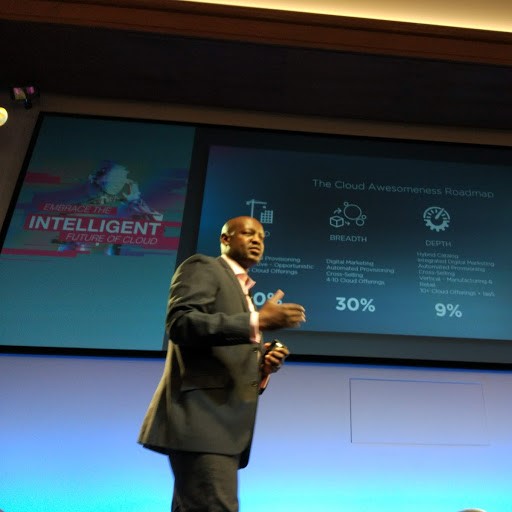
The Ingram Micro Cloud summit last week was the chance for the distribution giant to show what it is doing in cloud and services, and talking to its cloud boss Apay Obang-Oway, Director Cloud & Software, UK & Ireland, it looks like a fundamental shift in its business, and its channels.
“It is an interesting time for the industry – one of the most exciting ever. The channel is having issues keeping up, but everyone is struggling. But if are going to survive and thrive, then you have to keep up - and one of the important things to do is to specialise – you can’t be all things to all men, any more,” he says.
“That horizontal approach is not realistic when you think about how much deeper you have to go in the customer organisation, in understanding it, understanding the reality of what they are dealing with, the competitive business they are in, even down to the legal issues. That is why verticalisation is key,” he says.

The implications are profound; not all the channel will come out of the other end: “Gartner talks about a third of the channel making it and I think they are not too far off the mark. Not all will cross the chasm. And there will be new entrants, who we are already seeing. What we see and love about the existing channel is not what we expect to see in a few years’ time.”
“This event – 40% of those in attendance are new to Ingram Micro; the fact that we are changing the conversation is attracting the partners.”
Among the channel players, Ingram Micro is seeing more digital agencies and other newcomers; “There are others we have not even thought of. We’ll find them by what they are trying to do and how they are trying to grow. Any digitised organisation will need certain capabilities. Anyone trying to scale with IoT or AI is going to need a platform and they will look for something to enable their digital journey. They will find us, but it means how we describe ourselves in the market is also changing.”
Who are these new channels – the digital agents, for example? “In our landscape they are partners whose core offering is a marketing service of some sort – a digital marketing agency, but they have been able to get into the application layer with a customer and then to the data centre. The platform is where they are involved, and that is where they are being savvy- seeing that the business model changes and goes beyond marketing services.”
“Everything is up for grabs – there is not business model that will not be changed, and we need to be open to everything.”
He says that getting the message out to customers and potential customers is a new required skill in the channel: “Those that don’t understand the marketing won’t be able to get the depth and breadth they need. So we help partners talk to customers. The partnership is changing and has evolved into one where we take our capabilities out with partners to help amplify their message.
In this somewhat new message about the traditional two-tier model for distribution, he says the end-customer reality is being looked at “like never before and bringing insights that help activate and enable our traditional partner base faster”. “When we use content about the fourth industrial revolution, we are looking at what it means for the end-user customer – what does it mean in retail, in healthcare. It is a very different way to go to market.”
And what is emerging from the discussions with channels and their customers: “We are finding a lot more automation questions and automation of workloads. Today in the cloud we are mainly growing through Infrastructure as a Service (IaaS). That is behind our investment in cloud – up 30% in the last year, and we are recruiting data analysts, which we have not done before. We are recruiting automation experts; they carry a premium. Perhaps the industry needs to mature more to understand the costs associated with this, but we have a fertile ground in the existing technologist who can see what is coming and can move away from basic tasks like configuring routers to these new areas.”
“The challenge for partners is in their technical teams – we are two-three chapters ahead of them. Some people will make the transition, some won’t,” he concludes.
[to come soon – the Ingram Micro cloud platform and other ideas]



